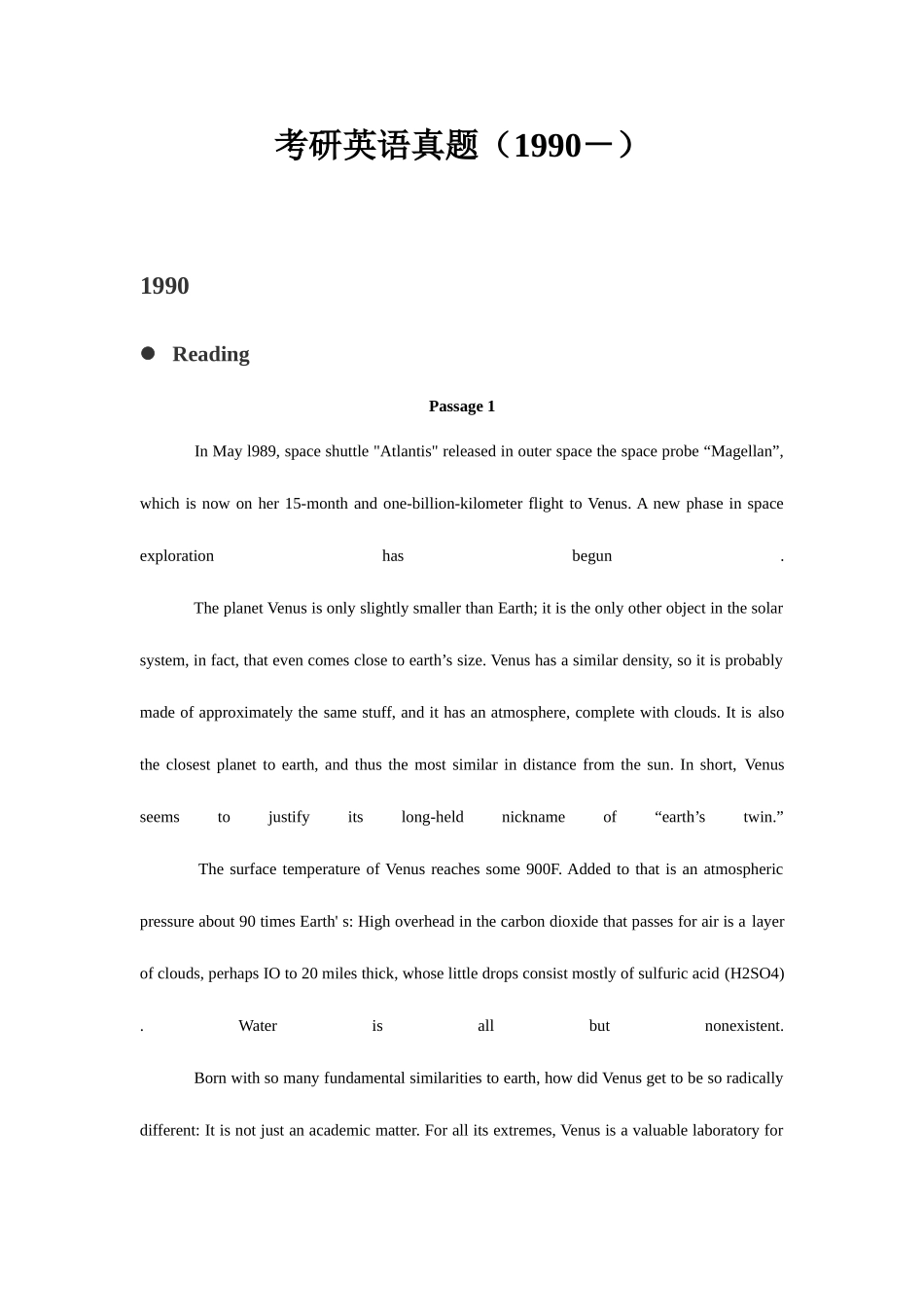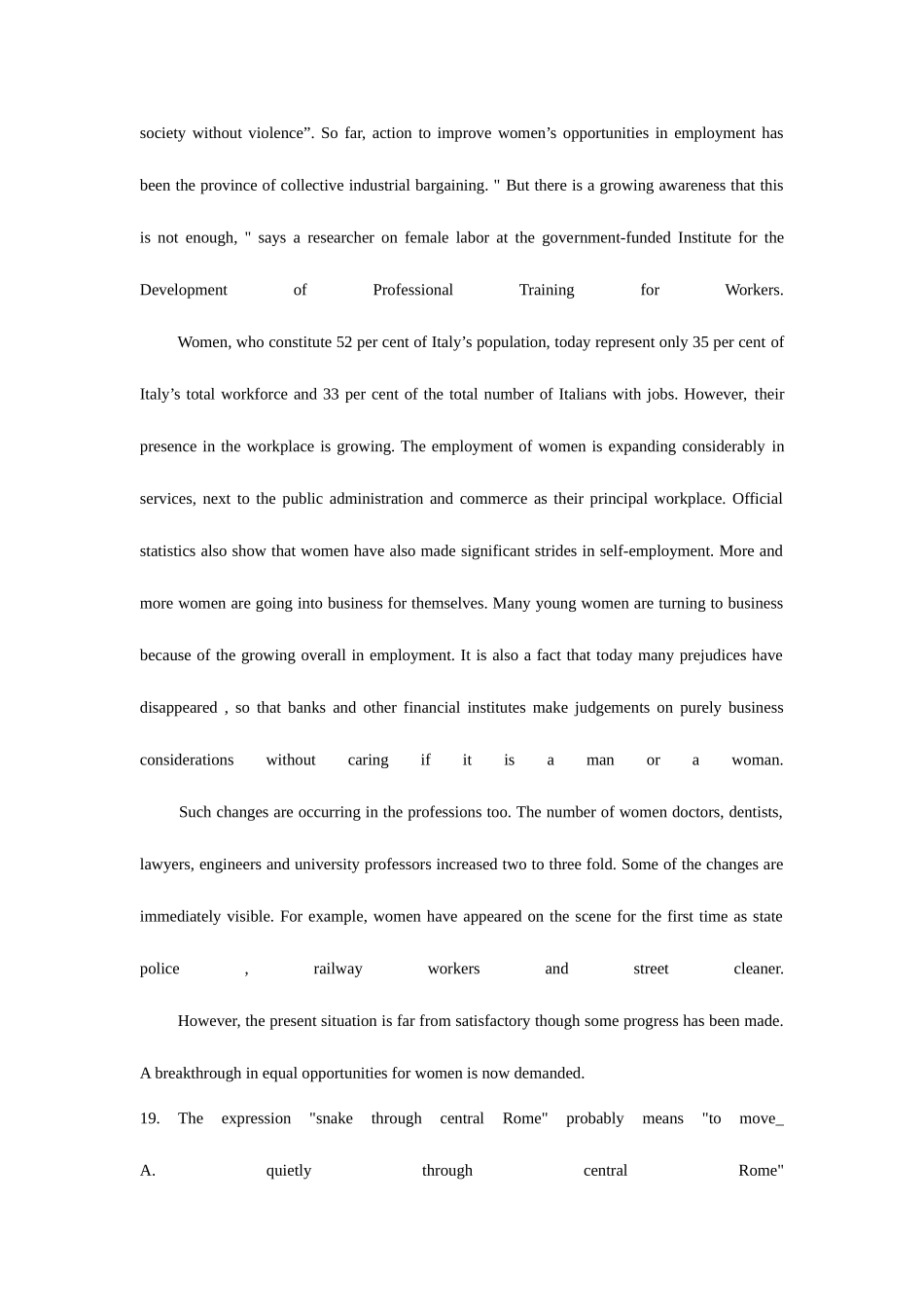考研英语真题(1990-)1990 ReadingPassage 1 In May l989, space shuttle "Atlantis" released in outer space the space probe “Magellan”, which is now on her 15-month and one-billion-kilometer flight to Venus. A new phase in spaceexploration has begun . The planet Venus is only slightly smaller than Earth; it is the only other object in the solarsystem, in fact, that even comes close to earth’s size. Venus has a similar density, so it is probably made of approximately the same stuff, and it has an atmosphere, complete with clouds. It is also the closest planet to earth, and thus the most similar in distance from the sun. In short, Venus seems to justify its long-held nickname of “earth’s twin.” The surface temperature of Venus reaches some 900F. Added to that is an atmospheric pressure about 90 times Earth' s: High overhead in the carbon dioxide that passes for air is a layer of clouds, perhaps IO to 20 miles thick, whose little drops consist mostly of sulfuric acid (H2SO4) . Water is all but nonexistent. Born with so many fundamental similarities to earth, how did Venus get to be so radically different: It is not just an academic matter. For all its extremes, Venus is a valuable laboratory for researchers studying the weather and climate of earth. It has no earth’s oceans, so the heat transport and other mechanisms are greatly simplified. In addition, the planet Venus takes 243 earth-days to turn once on its axis, so incoming heat from the sun is added and distributed at a more leisurely, observable pace.16. Venus is similar to Earth in __ A. size and density B. distance from the sunC. having atmosphere D. all of the above17. The greatest value in studying Venus should be ...


